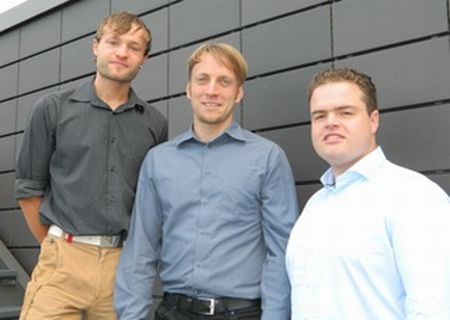Tilmann Leisegang: “Towards a miniature X-ray laboratory”
Youris.com
Appeared originally on http://www.youris.com/Nano/Interviews/Tilmann_Leisegang_Towards_A_Miniature_XRay_Laboratory.kl
An autofocusing X-ray optic improves materials research and brings a generation of pocket-size systems
More than a century after their discovery, X-rays still claim their place in medicine and science. Analytic methods based on X-rays, such as diffraction or spectroscopy, are particularly valuable in research and development, since they allow to study the structure of matter at the atomic level to develop new smart materials.
Building an X-ray laboratory in miniature size is the vision of Saxray GmbH, a German startup founded by Marco Herrmann (CTO), Dr. Tilmann Leisegang (CEO) and Robert Schmid (CEO) in Dresden.
Dr. Leisegang, how does your technology differ from the X-ray machines that we are used to see?
To build an X-ray laboratory in miniature (say, the size of a cell phone), you need three things: a source producing X-rays, an optic shaping a beam and a detector that reads them. Conventional sources of X-rays are difficult to miniaturize because they require a high voltage and cooling systems. Our source, instead, is based on so called piezoelectric crystals that produce high intense X-rays when heated, without the need of high power consumptions. This process has been available for several years, we applied it in a miniature system.
What about the optic?
The optic is our most innovative component. We have built an optical device that can adjust its optimal position automatically and monitors the beam properties with the help of a software. Focusing X-rays can be very time-consuming, because of their shorter wavelengths. You need to be 1000 times more precise than with normal light. For certain studies, it may take several hours to adjust the focus using conventional X-ray equipment. With our “autofocusing” optic, this time can be reduced significantly. Also, we don’t need additional devices for validate the calibration or to monitor the beam properties.. This allows to obtain a high-performance system. which is essential to meet the increasing demand for higher quality and precision in material research.
What are the next steps towards a miniature X-ray system?
We are looking for industrial partners that are interested in such optics or in the application of miniature X-ray systems. We have built a prototype to test the performance and long-term stability of different fabrication methods, and we are improving the software. Pronano helped us a lot to shape a vision for the company and provided a competence to deal with the economic and legal aspects. Today we focus on research, trying to improve the X-ray systems that are being used in many laboratories.
Do you envisage other applications, such as in medicine?
There may be applications of our technology in the medical field but also in the next-generation extreme ultraviolet (EUV) lithography; however, it would be premature to talk about them. Sure, many surprises are awaiting us. The technology behind X-rays may be a century old, but every five years or so, a Nobel prize is still awarded for works related to them. I believe that these beams will continue to have a place in our lives 100 years from now.
